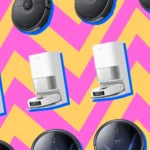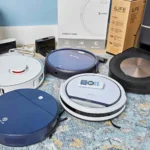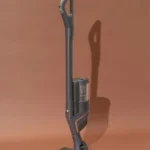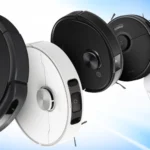Have you ever been conflicted when it comes to choosing a smart vacuum cleaner for your home? With the vast options available, it can be overwhelming to decide which one is right for you. The battle between bagged and bagless vacuum cleaners has been going on for years, leaving many consumers perplexed. In this article, we will delve into the ultimate comparison guide between the two types of smart vacuum cleaners to help you make an informed decision. From their functioning, advantages, disadvantages, to performance comparison, we will examine each aspect in detail. So, sit back and relax as we guide you through the world of bagged vs. bagless smart vacuum cleaners.
How They Work
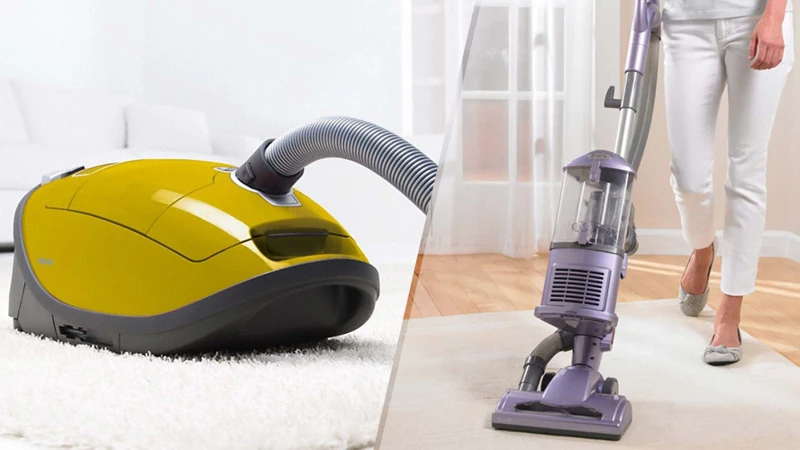
How do bagged and bagless smart vacuum cleaners work? Understanding the basic mechanism behind the two types of smart vacuums is essential in deciding which one is right for you. Bagged smart vacuum cleaners use a disposable bag to store dust, dirt, and debris. In contrast, bagless smart vacuums use a dustbin or canister to collect debris. The process may seem simple, but each method has unique features that affect the overall functionality of the smart vacuum cleaner. To delve more into the differences between these types of vacuums, let’s explore the mechanics and technology behind each type. If you’re interested in learning more about other smart vacuum comparisons, check out our LIDAR vs VSLAM navigation comparison, most powerful smart vacuums, and smart vacuums’ noise levels.
Bagged Smart Vacuum Cleaners
Bagged smart vacuum cleaners have been around for years and are still popular among consumers. These cleaners use a removable bag that collects dirt, dust, and other debris. They come in various sizes and styles, and some models have advanced features like extra filtration or self-sealing bags, which prevent dust from escaping when you change the bag.
Here is a comparison table for bagged smart vacuum cleaners:
| Advantages | Disadvantages |
|---|---|
| Less exposure to dust and allergens | May be more expensive due to ongoing bag costs |
| Easier and cleaner disposal of dirt and dust | Bags need to be replaced regularly and can be difficult to find for older models |
| May have larger capacity for dirt and dust | May experience a reduction in suction power as the bag fills up |
| May have more advanced filtration options, including HEPA filtration | May require more maintenance due to the need to replace bags |
While bagged smart vacuum cleaners have their advantages and disadvantages, they are still a popular choice for many consumers. If you want to learn more about how smart vacuum cleaners compare, check out our article on filter systems compared: HEPA vs standard filters in smart vacuum cleaners.
Bagless Smart Vacuum Cleaners
Bagless Smart Vacuum Cleaners use a dustbin to collect dirt and debris, rather than a disposable bag. This type of vacuum cleaner is becoming more popular in recent years, as they offer some distinct advantages over their bagged counterparts.
One of the biggest advantages of bagless smart vacuum cleaners is that they are more environmentally friendly. Unlike traditional vacuums, which require you to throw out the bag every time it gets full, bagless vacuums allow you to simply empty the dustbin and reuse it. This not only saves you money in the long run, but it also cuts down on waste.
Another advantage of bagless smart vacuum cleaners is that they typically have a transparent dustbin, so you can easily see how much dirt and debris has been collected. This is a useful feature, as it lets you know when it’s time to empty the bin.
However, there are also some disadvantages to using a bagless smart vacuum cleaner. One of the biggest downsides is that they can be messy to empty. When you dump the dustbin, dust and debris can go flying everywhere, which can be a nuisance.
Another potential issue with bagless smart vacuum cleaners is that they can be less hygienic than bagged vacuums. This is because there is no physical barrier between you and the dust and debris when you empty the bin.
| Advantages | Disadvantages |
|---|---|
| More environmentally friendly | Messy to empty |
| Transparent dustbin to easily track dirt and debris | Less hygienic |
Bagless smart vacuum cleaners are a good option if you want a more eco-friendly vacuum that saves you money in the long run. However, if you prioritize cleanliness and ease of use, a bagged vacuum might be a better choice.
If you’re interested in comparing different types of smart vacuums, check out our article on smart vacuums for pet hair, or read our comparison of smart vacuums with mopping capabilities.
Advantages and Disadvantages
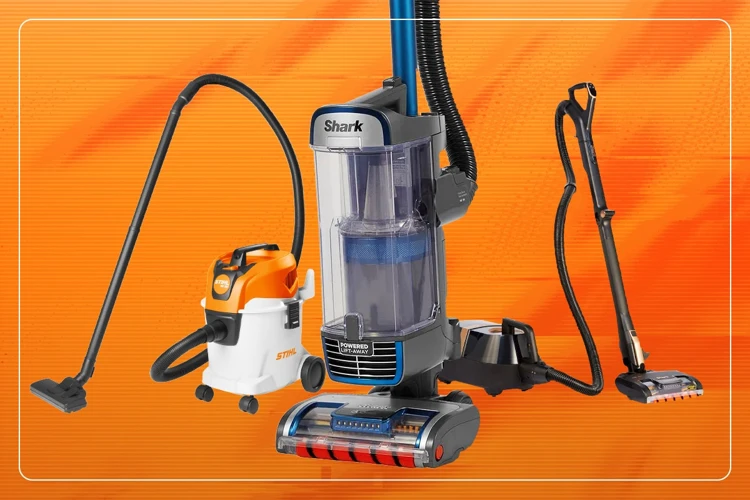
When it comes to choosing between bagged and bagless smart vacuum cleaners, it’s crucial to weigh their respective advantages and disadvantages to make an informed decision. In this section, we’ll dive into the pros and cons of each type so that you can get a better understanding of what you can expect from the device of your choice. Let’s explore the good and the bad of both and decide which one ticks all the boxes for you. Later on in this article, we’ll also compare their performance in several aspects such as filtration, capacity, and suction power. Before that, let’s see the distinct benefits and drawbacks of bagged and bagless smart vacuum cleaners.
Bagged Smart Vacuum Cleaners
Bagged smart vacuum cleaners are considered more traditional and have been in use for many years. They work by using a replaceable bag that is typically made of a high-quality material such as HEPA fabric.<\strong> Below are some more details on this type of vacuum cleaner:
- Dustbin: Bagged models come with a bag that the dustbin is attached to, and all the dirt and debris are collected directly into the bag. When the bag is full, it can simply be replaced with a new one.
- Filtration: Bagged vacuum cleaners are known for their filtration capabilities, as the bags are made of highly efficient materials such as HEPA fabric which can trap small particles and allergens.
- Capacity: The bags used in these cleaners are available in a variety of sizes and can hold a lot of dirt and debris. Needing less frequent replacement than bagless models.
- Maintenance: Bagged models are relatively easy to maintain since it requires no messy process of emptying the dustbin, you just need to replace the bag when it’s full.
- Suction Power: Bagged cleaners are great for those wanting a powerful suction experience, as the filtration system won’t become clogged with debris, as it occurs in the bagless models.
- Cost: Initially, bagged vacuum cleaners may be more expensive than bagless models since bags need to be purchased regularly. However, with a high-quality bag, the need to replace frequently may reduce, which will save you better in the long run.
If you are interested in learning more about the difference between self-emptying vs non-self-emptying vacuum cleaners, you can also check out our in-depth comparison article on that topic. Additionally, it’s also crucial to consider battery life when purchasing a smart vacuum cleaner, so we recommend that you also read our article on smart vacuum battery life comparison to learn more on this important aspect.
Bagless Smart Vacuum Cleaners
Bagless smart vacuum cleaners have become increasingly popular in recent years. Instead of using disposable bags to collect dust and debris, these vacuums have a removable bin or canister that you can empty and clean. Here are some advantages and disadvantages of using a bagless smart vacuum cleaner:
Advantages:
- Transparency: Since the bin is see-through, you can easily tell when it needs to be emptied, eliminating the guesswork.
- Cost-effective: You don’t need to purchase replacement bags, which saves money in the long run.
- Maintenance: Bagless vacuums are typically easier to maintain since you don’t have to worry about buying and replacing bags as often.
- Better suction: Bagless vacuums tend to have stronger suction because they don’t rely on a bag to capture dust and debris.
Disadvantages:
- Messy: Emptying the bin can be a messy process, as dust and debris may fly around if you’re not careful.
- Allergies: If you suffer from allergies or asthma, removing the bin for cleaning may release allergens into the air.
- Filters: Bagless vacuums often require frequent filter cleaning or replacement to maintain optimal performance.
- Odors: Depending on what you’re vacuuming, bagless vacuums may release odors when the bin is emptied.
Bagless smart vacuum cleaners can be a convenient and cost-effective option for those looking to upgrade their cleaning routine. Just be aware of the potential downsides before making your purchasing decision.
Performance Comparison
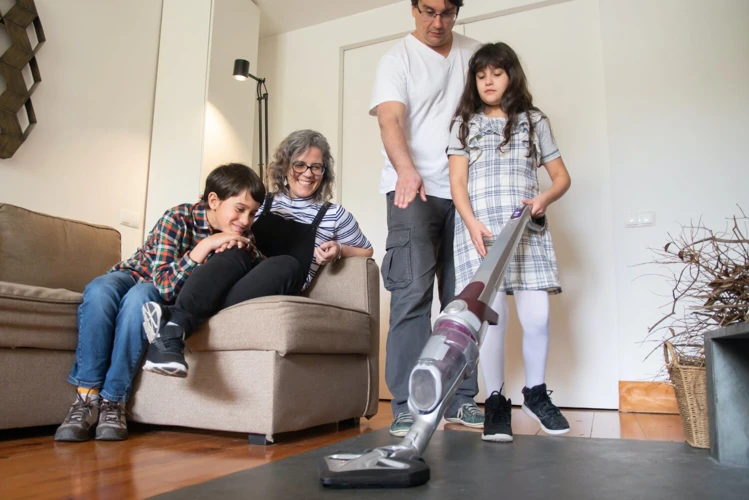
Now that we understand how bagged and bagless smart vacuum cleaners work, it’s time to compare their performance. This is where the real test begins, as we take a closer look at the filtration, capacity, maintenance, and suction power of each type of vacuum cleaner. Each of these factors plays a crucial role in deciding which type of vacuum cleaner is the best fit for your specific cleaning needs. So, let’s dive deep into the performance comparison of these two types of smart vacuum cleaners and see which one comes out on top.
Filtration
When it comes to the topic of filtration, both bagged and bagless smart vacuum cleaners have their distinctive benefits and drawbacks. Bagged smart vacuum cleaners rely on filters that capture the dust and debris inside the bag, preventing them from escaping back into the air. On the other hand, bagless smart vacuum cleaners use a combination of filters and dust cups to trap the dirt and dust, separating it from the air.
So, how do they compare in terms of filtration efficiency? Let’s take a closer look:
| Bagged Smart Vacuum Cleaners | Bagless Smart Vacuum Cleaners |
|---|---|
| Most bagged vacuum cleaners use a multi-stage filtration system with a cloth bag, a paper or synthetic bag, and a filter to trap dust, allergens, and other particles effectively. The bags can be easily disposed of after they are full, making it almost impossible for the dust to escape back into your home. However, the downside of this is that you have to keep buying new bags, which can become an additional expense. | Bagless vacuums, on the other hand, use a reusable dust cup or bin, allowing you to empty the container periodically. The dust cup or bin needs to be emptied regularly to ensure that the vacuum retains its full suction power. Bagless vacuums also feature filters, such as HEPA or cyclonic filters, which are designed to trap tiny dust particles and allergens effectively. However, bagless vacuums can be messier to empty and clean, leading to the possibility of some dust escaping back into your home. |
Pros:
Cons:
|
Pros:
Cons:
|
In terms of filtration, both bagged and bagless smart vacuum cleaners have their advantages and disadvantages. Bagged vacuums tend to be more effective at capturing dust and allergens, but you need to frequently purchase new bags, which can add up quickly. Bagless vacuums are more eco-friendly and save you the expense of buying replacement bags, but they require more frequent cleaning and can be messier when emptying their dust cups. Ultimately, the choice between bagged and bagless vacuums comes down to personal preference and lifestyle.
Capacity and Maintenance
When it comes to capacity and maintenance, bagged and bagless smart vacuum cleaners differ in their features and upkeep.
Bagged Smart Vacuum Cleaners:
- These types of vacuums usually have a larger capacity for dirt and debris, as the bag can hold more compared to the dustbin of a bagless vacuum.
- When the bag is full, the vacuum will typically give an indicator to let you know it needs to be replaced.
- Changing a bag is straightforward and hygienic – all you need to do is remove the bag and discard it, which prevents dust and allergens from escaping into the air.
- The downside is that you will need to purchase replacement bags, which can add to the maintenance cost over time.
Bagless Smart Vacuum Cleaners:
- These types of vacuums typically have a smaller dustbin capacity than their bagged counterparts, which means they may need to be emptied more frequently, especially during a deep cleaning session.
- Emptying the dustbin is easy as you simply detach it from the vacuum and dispose of the debris. However, it can be messy and may release dust and allergens back into the air.
- Some models come with washable filters that can be cleaned and reused, which saves money on maintenance costs and is more environmentally friendly.
- However, if the filters are not cleaned regularly, it can affect the performance of the vacuum and reduce suction power.
The capacity and maintenance of bagged and bagless smart vacuum cleaners have their pros and cons. If you prioritize hygienic disposal and have a larger space to clean, a bagged vacuum might be the better option. However, if you prefer a more environmentally friendly and cost-effective option, a bagless vacuum with washable filters might be the way to go.
Suction Power
When it comes to suction power, both bagged and bagless smart vacuum cleaners rely on their motors to generate the necessary suction force to pick up dirt, debris, and pet hair from floors and carpets. However, there are some differences in how these two types of vacuums handle suction power.
Bagged Smart Vacuum Cleaners
Bagged smart vacuum cleaners typically have stronger suction power compared to their bagless counterparts due to the fact that they use a self-sealing bag to capture all the dust and debris. This means that the dirt and dust particles do not clog the filter or reduce the airflow, which can often happen with bagless models, resulting in a loss of suction power. With a bagged vacuum, the suction power remains consistent until the bag is full and needs to be replaced.
Bagless Smart Vacuum Cleaners
On the other hand, bagless smart vacuum cleaners rely on cyclonic technology to maintain suction power. As air flows into the vacuum, it spins rapidly in a circular motion inside a cylindrical or conical chamber known as the dustbin or canister. The spinning motion creates centrifugal force that separates dust, dirt, and debris from the air and collects it into the dustbin. However, if the dustbin is not emptied frequently or the filters are not cleaned or replaced regularly, the suction power can decrease over time.
Factors Affecting Suction Power Performance
Aside from the type of vacuum, there are other factors that affect suction power performance, including the type of flooring, the amount of dirt and debris, and the height adjustment of the vacuum. For example, high-pile carpets require more suction power compared to hardwood floors or low-pile carpets. Additionally, a full dustbin or a clogged filter can hinder suction power, even in bagged vacuums. It is essential to maintain and replace the bags and filters regularly to ensure optimal performance.
Both bagged and bagless smart vacuum cleaners can achieve powerful suction, but the bagged models tend to have more consistent suction power due to their self-sealing bags. However, maintenance and proper use can ensure that either type of vacuum performs well in terms of suction power.
Which One to Choose?
After comparing the features and performance of bagged and bagless smart vacuum cleaners, you might still be wondering which one is the best choice for you. Both types have their advantages and disadvantages, and the final decision may ultimately come down to your specific needs and preferences. In the following section, we’ll dive deeper into the factors you should consider when deciding which type of smart vacuum cleaner to choose. So, let’s explore the different scenarios where one type might outperform the other and help you make the right choice.
If You Have Allergies or Asthma
When it comes to deciding between bagged and bagless smart vacuum cleaners, those who have allergies or asthma are often concerned about which type of vacuum is better for them. Here’s a detailed comparison between the two options:
| Bagged Smart Vacuum Cleaners | Bagless Smart Vacuum Cleaners | |||
|---|---|---|---|---|
| Filtration | Bagged vacuums generally have better filtration systems, which are efficient in capturing small dust particles and allergens. The dust and allergens are trapped in the bag, making it a safe and hygienic way to clean your home. Also, when you remove the full bag, it is a closed system so you won’t come into contact with the allergens. | Bagless vacuums also have good filtration systems, but they can be less efficient than bagged vacuums. The dust and allergens are collected in the dustbin, and when you empty it, dust and debris can escape and re-circulate in the air, potentially triggering allergies or asthma. | ||
| Capacity and Maintenance | Bagged vacuums usually have larger dust bag capacities and need to be replaced less frequently, making them a more convenient option. However, you need to purchase new bags every time the old one gets full which can be an additional expense. | Bagless vacuums have a transparent dustbin, which allows you to see when it’s full and needs to be emptied. But the emptying process can be messy, and you may need to wash the filters frequently, making it a less convenient option for those who want less maintenance work. | ||
| Suction Power | Since bagged vacuums have fewer vents, they often have more powerful suction, making them a better choice for deep carpet cleaning. The motor is designed to work with the bag system, which creates a better seal that makes sure there’s no air escaping. | Bagless vacuums usually have more vents, so they can have a weaker suction power than bagged vacuums. The dustbin and filters can clog easily, making it necessary to clean the filters frequently to maintain suction power. |
If you suffer from allergies or asthma, then it’s better to choose a bagged vacuum cleaner due to its high-efficiency filtration system and the closed system that prevents contact with allergens. Bagged vacuums also have larger dust bag capacity, less leakage, and more powerful suction. However, bagless vacuums are a more convenient choice for those who don’t want to keep purchasing bags, and they have transparent dustbins that help to show when it’s full. Ultimately, it depends on your preference and specific needs.
If You Want Easy and Convenient Maintenance
When it comes to easy and convenient maintenance, bagless smart vacuum cleaners tend to have the upper hand. This is mainly due to the fact that they don’t require the use of bags, which need to be replaced regularly. Instead, they use a dustbin that can be easily emptied and cleaned.
To elaborate further, here’s a comparison table highlighting the maintenance advantages of bagless smart vacuum cleaners over their bagged counterparts:
| Feature | Bagged Smart Vacuum Cleaners | Bagless Smart Vacuum Cleaners |
| Bag Replacement | Needs to be replaced regularly. Buying bags can be an additional expense. | No bags to replace. Saves money and time. |
| Dustbin Emptying | Dustbin is not present. Entire bag needs to be removed and disposed of. | Dustbin can be emptied and washed easily. |
| Clog Detection | Bagged vacuum cleaners don’t have a clog detection feature. Clogs can be hard to detect and fix. | Bagless vacuum cleaners often come with a clog detection feature, making it easier to diagnose and fix any blockages. |
| Filter Cleaning | Filters need to be replaced regularly. Can add to the overall cost of maintenance. | Filters can be removed and washed easily. Saves money and time. |
As you can see from the table, bagless smart vacuum cleaners offer several advantages when it comes to maintenance. From not having to replace bags to dustbin emptying, bagless vacuums are often more user-friendly and require less maintenance overall.
If You Want More Powerful Suction
If you are looking for more powerful suction from your smart vacuum cleaner, there are a few things to consider when choosing between bagged and bagless models. Here are some key points to keep in mind:
– Bagged vacuums typically have stronger suction than bagless vacuums because their design allows air to flow more efficiently through the bag and filter, which can make a big difference in picking up dirt and debris from carpets and upholstery.
– However, some newer bagless models are designed to provide comparable suction power by using cyclonic technology to spin dust and debris away from the air stream and into a separate container. This means that you can get strong suction with the added convenience of not having to replace bags.
– If you have pets or high-traffic areas that require frequent vacuuming, a bagged model with a high-quality filtration system and a strong motor might be the best choice. Look for models that use HEPA filters or other advanced filtration systems to trap allergens and particles as small as 0.3 microns.
– On the other hand, if you prefer the ease of use and lower maintenance of a bagless vacuum, look for models with powerful motors and cyclonic technology that can handle tough cleaning jobs without losing suction. Models with adjustable suction settings can also be helpful, as they allow you to customize the cleaning power based on the type of surface you are cleaning.
The key to finding a vacuum with powerful suction is to look for models that prioritize efficiency and airflow, whether they are bagged or bagless. Consider the size and layout of your home, the types of surfaces you need to clean, and any specific cleaning needs (such as pet hair or allergies) to find a model that can provide the suction power you need to keep your floors and furniture clean and tidy.
If You Want to Save Money in the Long Run
When it comes to saving money in the long run, the choice between bagged and bagless smart vacuum cleaners depends on several factors. One of them is the cost of replacement parts like bags and filters.
Bagged Smart Vacuum Cleaners may seem expensive at first because you need to keep buying bags, but they can save you money in the long run. Bags are usually inexpensive, and depending on the model of the vacuum cleaner, you may not need to replace them frequently. Some high-quality bags can be used for several months and offer a better filtration system compared to bagless cleaners. Plus, bags prevent dirt and debris from coming into contact with the motor, which can extend the life of your vacuum cleaner.
Bagless Smart Vacuum Cleaners, on the other hand, don’t require bags, which could be advantageous in terms of saving money. You don’t have to keep buying bags, which means you can save a few bucks in the short run. However, filters in bagless cleaners may have to be replaced frequently, especially when the vacuum is put to heavy use. Some of the filters can be washed and reused, but others may have to be purchased.
Below is a comparison table to help you decide which option is more cost-effective for you.
| Bagged Smart Vacuum Cleaners | Bagless Smart Vacuum Cleaners | |
|---|---|---|
| Upfront Cost | Cheap to High | Cheap to High |
| Cost of Replacement Parts | Inexpensive bags with better quality filtration | Inexpensive filters with lower quality filtration (may have to replace frequently) |
| Long-Term Cost | Cheaper in the long run due to less frequent replacement of bags and better motor protection | Expensive in the long run due to more frequent replacement of filters |
Remember that the long-term cost savings will depend on the frequency of use and replacement of parts, as well as the initial cost of the vacuum cleaner. So, weigh out the pros and cons of each option before making a decision.
Conclusion
In conclusion, both bagged and bagless smart vacuum cleaners have their own advantages and disadvantages. It ultimately depends on the specific needs and preferences of the user.
Budget is an important factor for many people when choosing a smart vacuum cleaner. Bagless options are often less expensive in the short run but may require costly filter replacements over time. Bagged options may have a higher upfront cost, but the replacement bags are typically more affordable.
Convenience is also a significant consideration. Bagless options are easier to empty and allow users to see when the dustbin is full. However, emptying the bin may lead to exposure to dust and allergens. Bagged options may require less maintenance overall, but users must monitor the bag’s fullness and purchase replacements as needed.
Performance can vary depending on the specific make and model of the smart vacuum cleaner. Bagged options often have stronger suction power and better filtration. They are typically the preferred option for those with allergies or asthma. Bagless options can still provide adequate suction power and filtration but may require more frequent filter cleanings.
Maintenance is another crucial factor to consider. Bagged options require less maintenance overall but may necessitate frequent bag changes. Bagless options require more maintenance, but users can easily see when the dustbin needs to be emptied or the filter needs to be cleaned.
After considering all these factors, it’s clear that there is no one-size-fits-all solution. It’s up to the individual to decide which option is best suited for their needs. Whether you choose a bagged or bagless smart vacuum cleaner, always remember to follow the manufacturer’s instructions and maintain the vacuum properly. With proper care, a smart vacuum cleaner can provide many years of efficient and effective cleaning.
Frequently Asked Questions
1. How often do I need to replace the bag in a bagged smart vacuum cleaner?
It depends on how often you vacuum and how much dirt and debris your home accumulates. Generally, it is recommended to replace the bag once it is about two-thirds full.
2. Can bagless smart vacuum cleaners filter out allergens and dust particles effectively?
Yes, most modern bagless smart vacuum cleaners are equipped with advanced HEPA filtration systems that can effectively capture tiny particles such as allergens and dust mites.
3. Are bagged smart vacuum cleaners more affordable than bagless ones?
Not necessarily. Bagged vacuum cleaners require ongoing expenses for replacement bags, while bagless vacuum cleaners require occasional filter replacements. The cost difference will depend on the specific model and your usage habits.
4. Can I use a bagless smart vacuum cleaner on all types of surfaces?
Yes, most bagless smart vacuum cleaners have adjustable settings for different surfaces such as hardwood floors, carpets, and upholstery.
5. Is suction power the most important factor to consider when choosing between bagged and bagless smart vacuum cleaners?
No, suction power is only one aspect of a vacuum cleaner’s performance. Other factors such as filtration, capacity, and maintenance should also be taken into account.
6. Can I wash the filters in a bagless smart vacuum cleaner instead of replacing them?
Yes, many bagless smart vacuum cleaners have washable filters that can be reused after cleaning. This can save you money in the long run.
7. How often do I need to clean the dustbin in a bagless smart vacuum cleaner?
It depends on how often you vacuum and how much dirt and debris your home accumulates. Generally, it is recommended to empty the dustbin after each use.
8. Do bagged smart vacuum cleaners have better suction power than bagless ones?
Not necessarily. Suction power depends on the specific model and brand, and both bagged and bagless smart vacuum cleaners can provide powerful suction.
9. Can I use a bagless smart vacuum cleaner to clean up wet spills?
No, bagless smart vacuum cleaners are not designed for wet spills. Using them for this purpose may damage the motor and components.
10. Are bagless smart vacuum cleaners more difficult to maintain than bagged ones?
Not necessarily. Bagless smart vacuum cleaners require occasional filter replacements and cleaning of the dustbin, while bagged vacuum cleaners require ongoing expenses for replacement bags. The ease of maintenance will depend on the specific model and your usage habits.

